
The Story of NPK
Falmouth-based writer Jo Thomas participated in this field trip, which traced the history of Cornwall’s agricultural industry through the landscape, visiting examples of Iron Age, Medieval, Pre-Industrial, and contemporary farming. The field trip was led by artist Paul Chaney and researcher Kenna Hernly, founders of FIELDCLUB, a collaborative art research project that investigates hypothetical, and at times post-apocalyptic, models of future land use and food production.
What do you see when you look at a field full of cows or a sweeping valley of crops swaying gently in the breeze? Surely, these pastoral scenes are some of the most idyllic and unobtrusive the mind can summon. But as FIELDCLUB, our guides on this speculative tour of the history of agriculture, remind us farming is not a benign activity. It is one of the most extractive of all the industries that have enabled humans to survive and thrive on this planet.
The ‘N’, ‘P’ and ‘K’ that star in this story are the chemical symbols for nitrogen, phosphorous and potassium – the nutrients upon which all life relies. Plants extract these essential nutrients from the environment and they are passed on to us through the food we eat, enabling us to grow and function as living, breathing human beings. It’s the processes through which humans have sought to maximise the efficiency and output of this cycle that have driven agricultural developments over thousands and thousands of years.
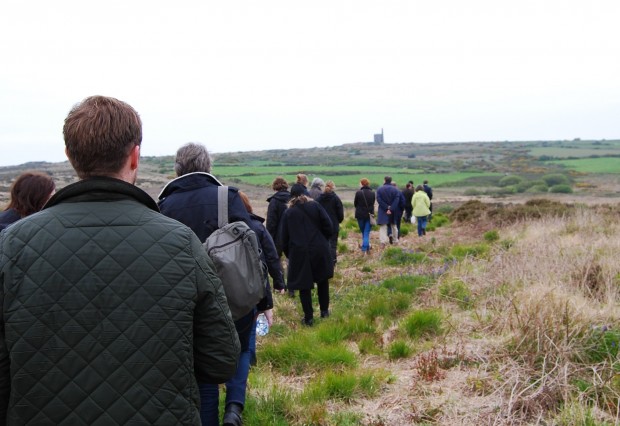
To begin the story, FIELDCLUB take us to a field near Lanyon Quoit – the closest we can get on the West Penwith peninsula to unfarmed land. The plants on this native heath have strong and deep roots, bringing up minerals from the rock layer below and depositing them in the topsoil when they die, but this natural process is extremely slow.
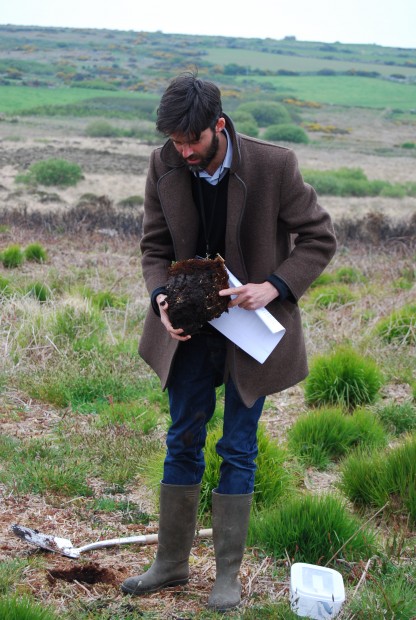
There’s evidence here of burning back, which releases the nutrients from the plants into the soil much more quickly than just letting the plants die back naturally. Standing out on the open heath, conversation turns to discussing at what point in history people would have stopped just moving on to a new patch of land when the nutrients in the soil started to be depleted and affect productivity, and when and how they would have discovered ways to enrich the soil, such as adding manure.
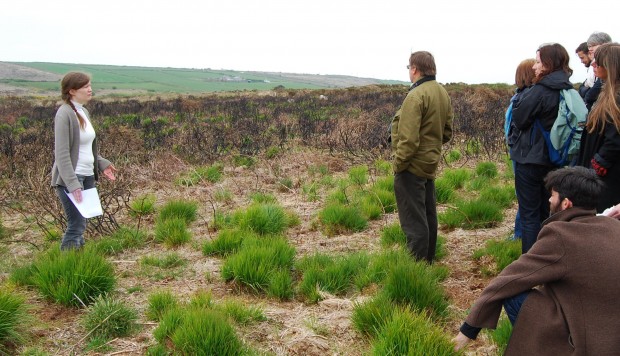
It’s suggested that it had to do with population growth and therefore being less mobile. They would have had to find ways to cultivate more food for the growing population and so the cycle would have continued. Working out what seemed to have a positive effect on crop yields would have resulted from a combination of a slower pace of life – being able to notice things more – and the passing down of valuable information from generation to generation.
At Bosigran, just a few miles from Land’s End, we appear to be taken to just another ordinary field (albeit one with the very impressive backdrop of the Atlantic ocean!). But as landscape historian David Giddings reveals, we are in fact standing in one of the best preserved Bronze Age to late Medieval field systems in Europe, a prehistoric landscape that will never again be ploughed as it is now under the protection of the National Trust.
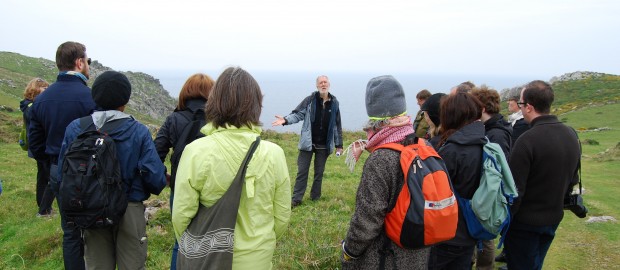
Here, David teaches us how to read the fields to spot the evidence that is all around us of the people who lived and worked here 2-3,000 years ago: terraces that show these steep fields, some of which practically tumble away into the sea, have been ploughed and cultivated over long periods; small stones piled up on huge boulders, or clearance cairns, evidence of stone picking to make the earth easier to plough; clusters of the remains of Romano-British houses that prove hundreds of people would once have been living in this seemingly inhospitable landscape.
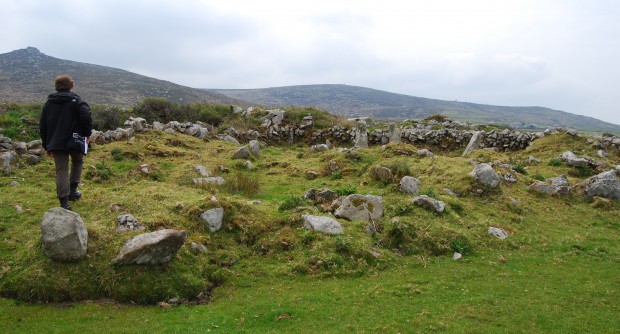
We talk about ways in which these early farmers would have dealt with the problem common to all farmers across thousands of years – how to retain the nutrients that the very act of farming helps to deplete. Our FIELDCLUB guides explain their theory of ‘the economy of containment.’ That the people farming these fields at the edge of the country would have taken advantage of the way nature was already concentrating these precious nutrients – seaweed, sand, animal dung, blood and bones – thus exploiting nature’s very useful habit of recycling and containing.
But with the need to feed an ever-growing population, farming was always taking more from the soil than could ever be put back in. It was only after the Black Death, which lowered the population and took the pressure off agriculture, that more land could be left fallow, allowing nutrients to build back up and a much more efficient system of crop rotation to be developed.
Through everything we’re discovering about agricultural industry, there runs the thread of human ingenuity developing innovations which, in turn, increase production, which means populations rise to meet that output and further innovations are needed to keep up. As technologies developed in the nineteenth century, increased transport and travel possibilities led to one of the defining developments in the Story of NPK. The holy grail had always been finding a fixed, solid form of the elusive nutrient nitrogen and in 1809 a chain of islands off the coast of Bolivia were found to be made of tens of thousands of years’ worth of petrified bird droppings or ‘guano’. In other words, a massive natural supply of highly concentrated fertiliser that could be shipped all around the world.
And here’s where things get really interesting. The extraction of guano marks the first point in the history of agriculture when, as FIELDCLUB put it, humans enter into geological time. We started extracting things quicker than they could ever be renewed or replaced, using up resources that had been created by millions and millions of years of natural processes. From this point onwards, people were switched on to the possibilities of where resources could be found. Chemical and mineral hunters discovered what local people around the world had been using on a tiny scale and turned it into massive extractive industries. Agriculture moved from cyclicality to linearity.
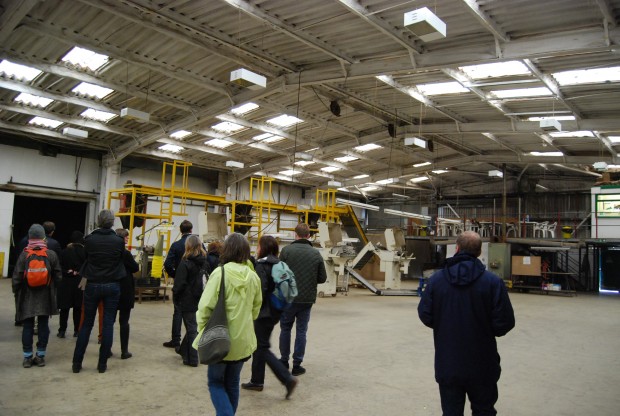
The final chapter of the story, for today at least, is told at a modern, industrial agricultural facility. There are still fields involved – 2,500 acres between Land’s End and Truro – but we don’t stand in the fields to talk about how the processes here work. We don’t even look at the fields. We see giant tractors and huge concrete and corrugated iron warehouses, blast chillers and sorting machines.
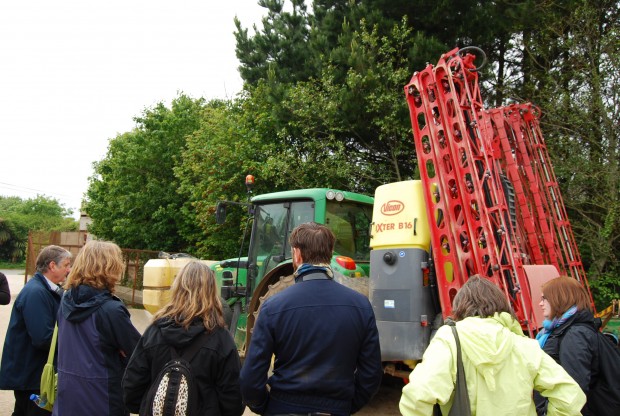
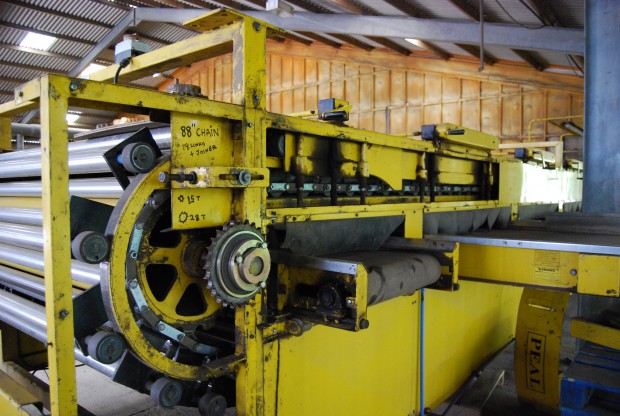
As the farm manager tells us, “Technology is everywhere.” Everything and everybody has a bar code. Chemicals are absolutely key to this operation; for controlling pests, preventing the spread of diseases, preserving crops and maximising yield. Everything they produce here has a final customer and the spec, size and colour can be controlled to make sure the customer gets what they want. And they must be doing a good job because this is a very successful company employing 600 staff at peak times and supplying all the major UK supermarkets, as well as exporting to Europe and America.
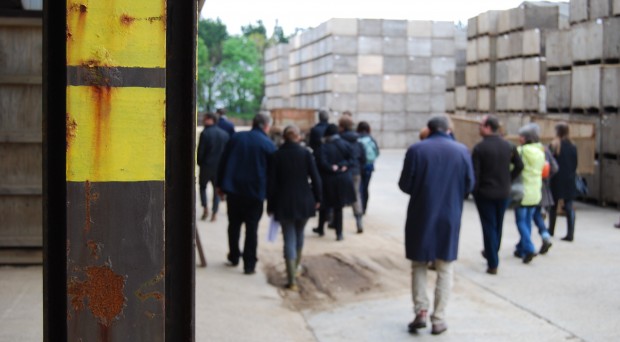
All this energy, all this effort, all this extraction and transportation: the scale of what they’re doing here is immense. And the most surprising thing? It’s not even for food. It’s for cut flowers and bulbs.
With their expert hand, FIELDCLUB have guided us a very long way on our journey today. Within the space of about 30 miles we’ve dug down into geological time and also been given the tools to imagine the possibilities of the future. If the strongest thread in the Story of NPK continues to be human ingenuity, I am left wondering which way our next innovations will take us and what part we can play in writing the story.
Read more about this field trip in the Programme listing and view the report by FIELDCLUB (003).
